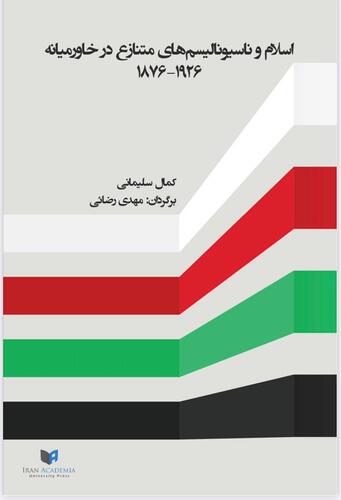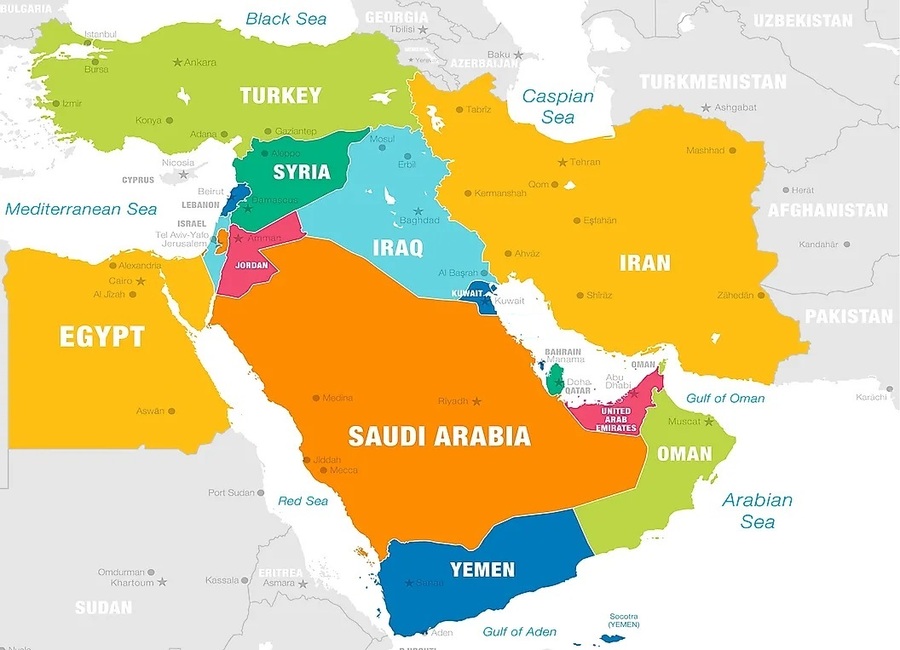Dr. Azad Mukri
Throughout the past century, the Kurds have always been present in the conflict between Islamic and nationalist forces. Their land and identity have always been under the threats of nationalist and religious forces. Reading the history of Iran after "Iranian Constitutional Movement" proves the fact that Persian-Iranian-Shia nationalism is being formed and shaped. The nationalist and centralist forces of Persians are reinforcing and developing the ideological bases of the nationalism movement. Through various readings, they are forming a structure that did not exist before, in other words, they are manufacturing an artificial identity that is in fact getting formed for the first time.
In other words, the Iranian intellectuals are creating a form of identity as an ideal object that was never before seen and originally lacked a tangible and emotional existence. The created existence and the dozen books and articles written about it did not relate to the true Iranian society, instead, they related to the imaginary Iranian subject.
The reference of the Iranian writers of that era to the ancient sources of Persian literature and the political sources of analyzing the idea of Iranshahr, the desire of those aspects of history to create a different identity from the true identity of the Iranian society with its various identities was intended to create evidence and visualize a common understanding that had not existed before and in fact did not have any connection to the real world of the Iranian people, nations and so on. They wanted to create an artificial/ constructed society to become the fundamental base of a common understanding of Iranian social facts. According to "Charles Cooley", they wanted and still want to insist on this artificial/ constructed society and intellectualism in a way that the Iranian ethnics/nations come to this understanding that it is their notion too about the true structure of Iranian society. Cooley says: "I am not what you think I am. I am not what I think I am. I am what I think you think I am." That is, he discusses a change that has happened in the people's understanding. A change in the truth behind the reality of everything.
In this way, the Persians in the nationalist field have given a perspective to people in which borders, language, and culture should be recognized as they say. It means that people should think that the idea that they have created about identity is the truth and reality of the Iranian situation. Of course, they had equipped this ideology with the motor of religion and religious identity.
That is, the artificial/ constructed Iranian Persian, Shia of twelve Imams became a specific boundary.
The same phenomena developed in Turkey after the Ottoman Empire and became the basis for establishing a new social identity. In Iraq and other countries in this region, the same efforts have been carried out but we cannot discuss them in this article.
The aim of this article is that it is the first time that a scholar has considered the duality of religion/nationalism and emphasizes the role of these two fields of thought and intellect in identity.

"Professor Kamal Suleimani" is a lecturer in American universities, an author, and an intellectual from the East part of Kurdistan. He has discussed this important and sensitive field in his latest research.
The latest book of Prof. Suleimani, "Islam and the Opponent Nationalisms in the Middle East", discusses these two fields in the life of Middle Eastern societies between 1876 to 1926. Recently, this book has been translated by "Mehdi Rezaei" into Persian, and "The Iran-Academia Institute for Scientific Researches" in the Netherlands has published it.
This book is unique in its kind since it is the first time that two different fields of nationalism and religion have been exceptionally discussed in building the identity process. That is, political and social research was conducted to discuss the effects of these two thinking fields separately in the field of identity formation of a nation. Or both of these areas were combined. However, what is important in Prof. Suleimani's research is that he defines a different role for religion. It means that Suleimani's thesis is based on the principle that not only religion does not have a unifying role among the nations living in the Middle East but on the contrary, it has a distinguishing role in establishing a new identity. If Islamic unity has been mentioned before because of the phenomenon of religion, writers, and researchers assumed that Islam has at least created a relationship between the Middle East nations, on the contrary, Prof. Suleimani mentions in his research how each of the nations living in this geographical area are building their ideal nationalism based on religion. Thus, in this research, religion is not only a phenomenon that stands against nationalism and does not have a unifying role among the nations, and this phenomenon is not all the Islam followers and believers' "Habl al Matin" (unifying role), but on the contrary, the Turks have rebuilt Islam in a particular way to create their Turkish Islam and they believe this form of Islam is prior to other forms of Islam. The Arabs are creating a form of Islam that is in the form of the Qorayshi Arab style. The Iranians, as mentioned above, have applied their Shia Islam to reinforce Iranian nationalism to expand their ideal Islam range with the other forms of Islam in this region.

These are a part of Prof. Suleimani's attempt at this great work. However, I believe that Sulemani's main task in this book is to bring Kurds as followers of political movements in the Middle East into his reading and analytic circle. He talks about the same project that the ruling nations of the region had and wanted to strengthen their nationalist movement through religion and at the same time draw more and better boundaries of their thinking and nationality by differentiating their own Islam. In this analysis of Suleimani, Kurds also have attempted to use Islam as a tool to develop their nationalism and identity. The political movements such as "Sheikh Obeidullah Nahri" and "Sheikh Saeed" and a character like "Nawrasi" are among those topics that have become the content of this scientific research on a different kind of identity of the Kurds in the past century.
Reading this book which is written from the point of view of a Kurdish writer and a Kurdish academic and is based on the Ottoman background and evidence and the mentioned era in the research reveals many facts for the readers. It shows the reader a new world in the analysis of nationalistic movements in the Middle East. I can say that this book discusses the newest and most distinct views on nationalism.









